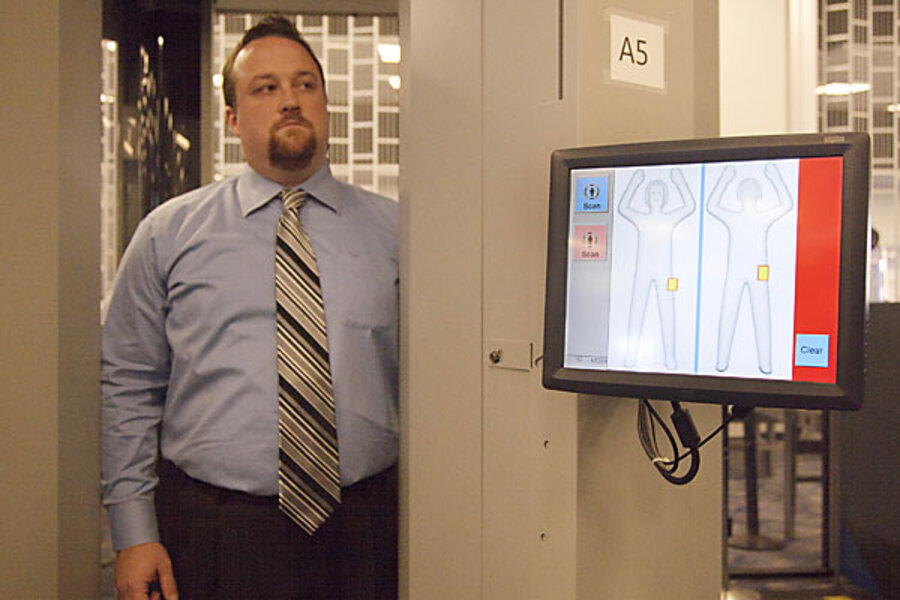TSA aimed to put body scanners in public places
Controversy surrounding the technology used at airport security checkpoints nationwide spread like wildfire in 2010, raising concerns about privacy issues and health concerns from radiation. But long before the lawsuits and major media outcry began to pile up, the federal government was testing out similar technology for use in public spaces ranging from train stations to sporting events, according to recently released documents.
Public interest group Electronic Privacy Information Center (EPIC) published yesterday (March 2) a series of government contracts dated from 2006 to 2008 regarding the possible rollout new anti-terrorism technologies. The Department of Homeland Security’s Transportation Security Administration (TSA) has denied allegations of a public rollout of the technology.
"Transit systems are attractive and visible targets for terrorism because they carry large numbers of people in concentrated, highly repetitious, and predictable patterns that are designed for easy access," the 173-page document said.
The document, which was handed over through a Freedom of Information Act request (FOIA), detailed how backscatter X-ray scanners and video cameras would be tacked on to mobile vans that could scan city streets and intelligent tracking devices could be mounted on buildings and poles. This would be a part of "covert inspection of moving subjects" to monitor pedestrian body and eye movement.
The report also discussed how walk-through screening systems that use active millimeter wave technology would be set up in key locations. This is the same imaging technology currently causing a stir in U.S. airports due to privacy, effectiveness and radiation-related health concerns.
Project stirs controversy
The project, which was estimated to cost about $3.5 million, was a part of a deal with Siemens Corp., Northeastern University in Boston and Rapiscan Systems, the documents revealed.
"These technologies are a gross violation of the Fourth Amendment, which guards against unreasonable searches, as travelers undergo a search without any suspicion of wrongdoing," EPIC staff counsel Ginger McCall said. "Whether or not this program has been rolled out or could be rolled out in the future, it needs to be shut down for good."
EPIC – which filed a lawsuit last year against the TSA – has been fighting to suspend backscatter and active millimeter wave technology at airport security checkpoints until concerns about their privacy protection, health effects, religious freedom ramifications and effectiveness are addressed. Court hearings will begin in Washington D.C. on March 9.
The two forms of technologies being used for airport security screenings use different electromagnetic frequencies. Active millimeter wave systems can penetrate clothing to reveal hidden threats, but are not thought to be harmful. X-ray backscatter technology, however, requires a passenger to stand in between two box panels as low-dose radiation is emitted to the body — mainly to the scalp — during its scan.
Some experts believe that this concentrated amount of radiation acts as a natural multiplier of cancer rates.
TSA denial
Although the documents indicate that the government had contracts to deploy this type of technology in more public places, the TSA denied these allegations via an e-mail response to TechNewsDaily.
"TSA has not tested the advanced imaging technology that is currently used at airports in mass transit environments and does not have plans to do so," said a TSA spokesperson.
In response to the comment, McCall argues that DHS’s statement is misleading.
"DHS's wording is very careful here; they are saying they haven't used airport scanners in other places," McCall said. "However, the technology they would use in public areas would indeed be different because it would scan people that are moving – they’re not going to require everyone in a train station or sporting event to stay still for a minute."
"The technology planned – as indicated in the contracts – would still emit radiation that could cause health problems, bring up the same issues of privacy and invasiveness, and still violates the Fourth amendment."
The documents show that the DHS rail pilot program included advanced image technology on the New York/New Jersey PATH System back in 2006. It used millimeter wave body-scan machines at a New Jersey train station before passengers got on the PATH train and did the same again in the summer 2009. McCall said the DHS had verifications of this on its site.
TSA did not return follow-up phone calls or e-mails as to whether or not this type of technology would be removed in the future.
Reach TechNewsDaily senior writer Samantha Murphy at smurphy@techmedianetwork.com. Follow her on Twitter @SamMurphy_TMN





